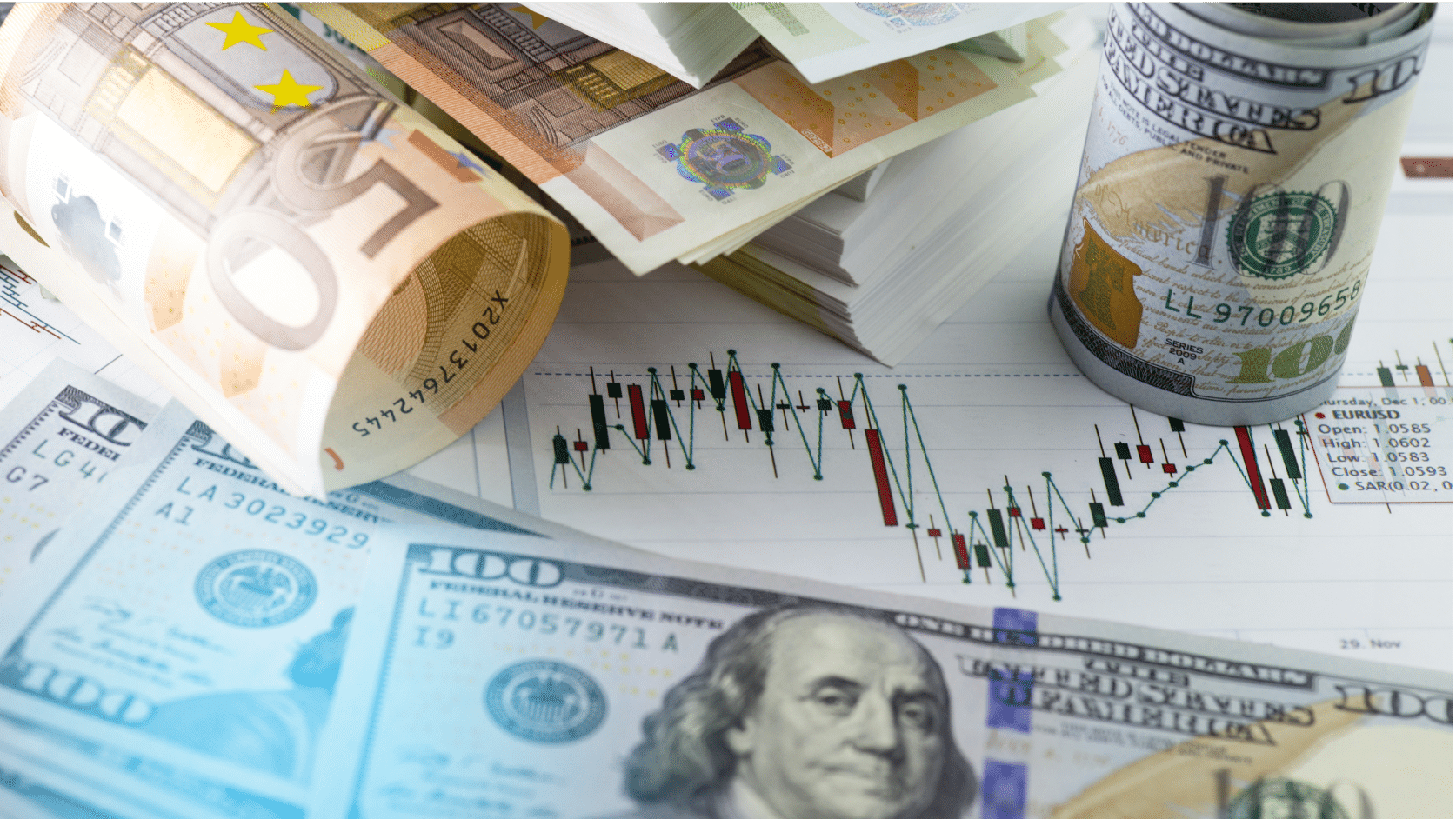
How Currency Correlation Improves Your Forex Trading
Key Takeaways:
- What are Currency Correlations & their role in improving your trading strategy?
- Top 5 reasons every trader should be using currency correlations
Overview
With a daily turnover hitting a record $7.5 trillion in April 2022, the Foreign Exchange (forex) is the biggest financial market in the world. Traders are attracted to forex for many reasons. The high liquidity of the forex market means there are many profit opportunities from the buying and selling of currency pairs. The market is globally accessible and is open 24 hours a day, five days a week. The trading sessions are spread across different time zones (Asia, London/Europe, New York) meaning you can trade forex anytime, anywhere in the working week. The global reach of forex is significant: the greatest amount of volatility can be found when the markets overlap. Where there is great profit potential, there is great competition, and forex traders need to understand the market to keep their edge. One way traders can hone their game is by using currency correlations. Before we can answer the questions “Why should traders use currency correlations?” and “What are the 5 reasons traders use currency correlations?” let us ensure that we understand the concept.
What Are Currency Correlations?
To best understand currency correlations, we should break down the term.
“Currency” refers to a medium of exchange used in trade and commerce to buy or sell goods and services. Currency can take the form of banknotes, coins, or digital currency: in other words, the packaging may change but the value lies in what we ascribe to it. Currencies such as the U.S. dollar, Euro, or Yen can be issued by governments, central banks, or other financial institutions, and their strength will usually be an indication of the political and economic stability of their issuing country.
“Correlation” is a statistical term describing the relationship between variables. In other words, correlation refers to the degree to which two or more variables move in relation to each other. Correlation can be negative or positive: positive correlation means variables move in the same direction, and negative correlation describes movement away from each other.
For currency correlation, it may also be helpful to understand that correlation is often measured using a correlation coefficient: from -1 to +1. A correlation coefficient of +1 indicates a perfect positive correlation, while that of -1 shows a perfect negative correlation. Where there is no correlation between variables a coefficient of 0 is used.
What Does Currency Correlation Mean?
Currency pairs go up and down in value. Compared against each other (and bear in mind that forex trading is always done in currency pairs e.g., EUR/USD) they move in relation to each other. Currency correlation refers to the movement between currencies and traders can use correlation to monitor the relationship between two or more currency pairs. In the paragraph above, we talked about “positive” and “negative” correlations. In the context of forex trading, positive correlation describes two currency pairs plotting the same course, while negative correlation denotes currency pairs moving in opposite directions.
A Working Example of Currency Correlation
It is generally accepted that the currency pair EUR/USD and GBP/USD are positively correlated because both currency pairs involve the US dollar. If the US dollar weakens, both currency pairs are likely to appreciate, and if the US dollar strengthens, both currency pairs are likely to depreciate. On the other hand, the currency pair EUR/USD and USD/JPY are negatively correlated because one currency pair involves the US dollar, while the other involves the Japanese yen. If the US dollar strengthens, the EUR/USD is likely to depreciate while the USD/JPY is likely to appreciate.
5 Reasons Why Forex Traders Should Use Currency Correlations
Currency correlation refers to the degree to which two or more currency pairs move in relation to each other. Forex traders can benefit from using currency correlations in the following ways:
Risk Management
By understanding the correlation between currency pairs, traders can manage their risk more effectively. Say for example a trader has positions in multiple currency pairs with high positive correlation, he or she could be exposing themselves to a higher level of risk as these positions could move in the same direction. On the other hand, if they have positions in currency pairs with negative correlation, they could reduce their overall risk exposure.
Why Manage Risk?
Forex traders should manage risk to protect their capital and maintain long-term profitability. Effective risk management helps forex traders avoid large losses, manage a stable trading account, and ensure that they can make consistent profits even during periods of market volatility or unexpected events.
Diversification
Currency correlation can help traders to diversify their portfolios. By selecting currency pairs with low or negative correlation, traders can reduce their portfolio risk and avoid concentration in a single currency.
Why Diversify?
Forex traders should diversify their portfolios to reduce the impact of market volatility on their assets. Currency pairs have distinct levels of volatility and are affected to varying degrees by external events. By including multiple pairs in their portfolio traders can not only minimize potential losses but also maximize potential gains. Overexposure to any one currency leaves a trader vulnerable to losses should that one currency drop significantly. Understanding correlation helps traders reach a more balanced risk-to-reward ratio and improve their overall trading performance.
Strategy Development
Currency correlation can be used to build trading strategies. By analyzing the correlation between different currency pairs, traders can identify potential opportunities to profit from movements in the market.
What Is the Importance of Having a Strategy?
Having a strategy is crucial when it comes to forex trading: traders can manage risk, spot profit opportunities, and avoid emotional-based decisions by structuring their approach on data and analysis.
Hedging
Currency correlation can be used for hedging purposes. If a trader has a long position (holder) in a currency pair and wants to reduce their risk exposure, they can “hedge” their position by taking a short position (buyer) in a negatively correlated currency pair.
Why Hedge?
Forex traders should hedge to minimize the impact of market volatility on their portfolios. Hedging means opening positions that are opposite to existing positions, therefore reducing the risk of loss if the market moves in an unexpected direction. By hedging their positions, traders can protect their profits, limit their losses, and potentially increase their overall returns. When it comes to forex trading and the exchange of international currencies, hedging also allows traders to lock in exchange rates and protect their assets against currency fluctuations.
Market Analysis
Understanding currency correlation leads to more effective market analysis. By analyzing the correlation between different currency pairs, traders can gain insight into the broader trends in the market and make more informed trading decisions.
Why Analyze the Markets?
Forex traders should analyze the markets to inform their trading decisions. By understanding the forex market trends and dynamics traders can anticipate price action and volatility and thereby increase profits while reducing risk.
Why Should Traders Use Currency Correlations?
The reasons above demonstrate the importance of currency correlations in forex trading:
- Risk management
- Portfolio diversification
- Strategy development
- Hedging positions
- Market analysis
Understanding currency correlations helps traders to identify potential losses in one currency – that could be offset by gains in another – thereby allowing them to reduce the overall risk of their portfolio. Traders can also use currency correlation to develop strategies: pairs trading, for instance, is based on the correlation between two currencies. By recognizing negative correlation, traders can diversify their portfolios across diverse instruments and thereby spread risk and maximize potential returns.
Finally, the relationship between currencies is what drives market trends and dynamics. By analyzing these correlations, forex traders can glean insight into price action and make more informed decisions. Traders using fundamental analysis to inform their decisions would be lost without paying attention to the relationships between currency pairs: major political events or economic changes can impact multiple currencies simultaneously, and recognizing patterns between two or more currencies will help traders predict these changes and move accordingly.
Forex trading and currency correlation go hand in hand: without a clear understanding and ability to recognize the latter, the former will always be disadvantaged. Forex traders who cannot spot the movement between pairs will essentially be stumbling blindly through a market full of opportunities. Forex traders would do well to focus on improving their understanding of this critical tool to the market. There are many resources – both online and offline – for learning about currency correlation and how this can be leveraged in forex trading and many brokers incorporate educational materials such as e-courses and webinars into their platforms.
Ready to take the challenge? Sign Up Now.



